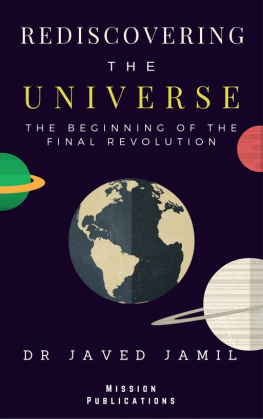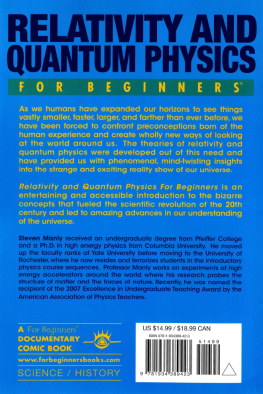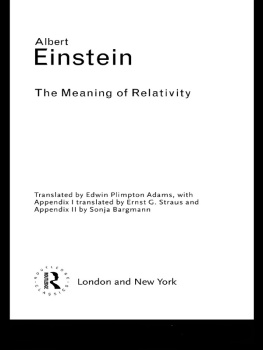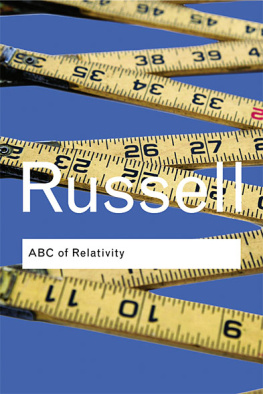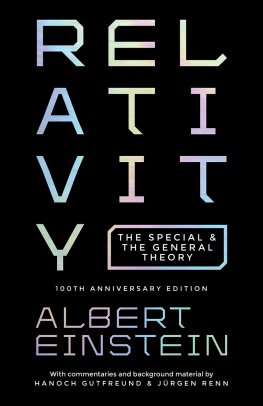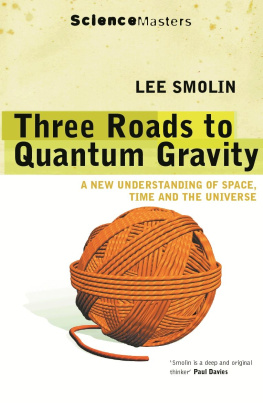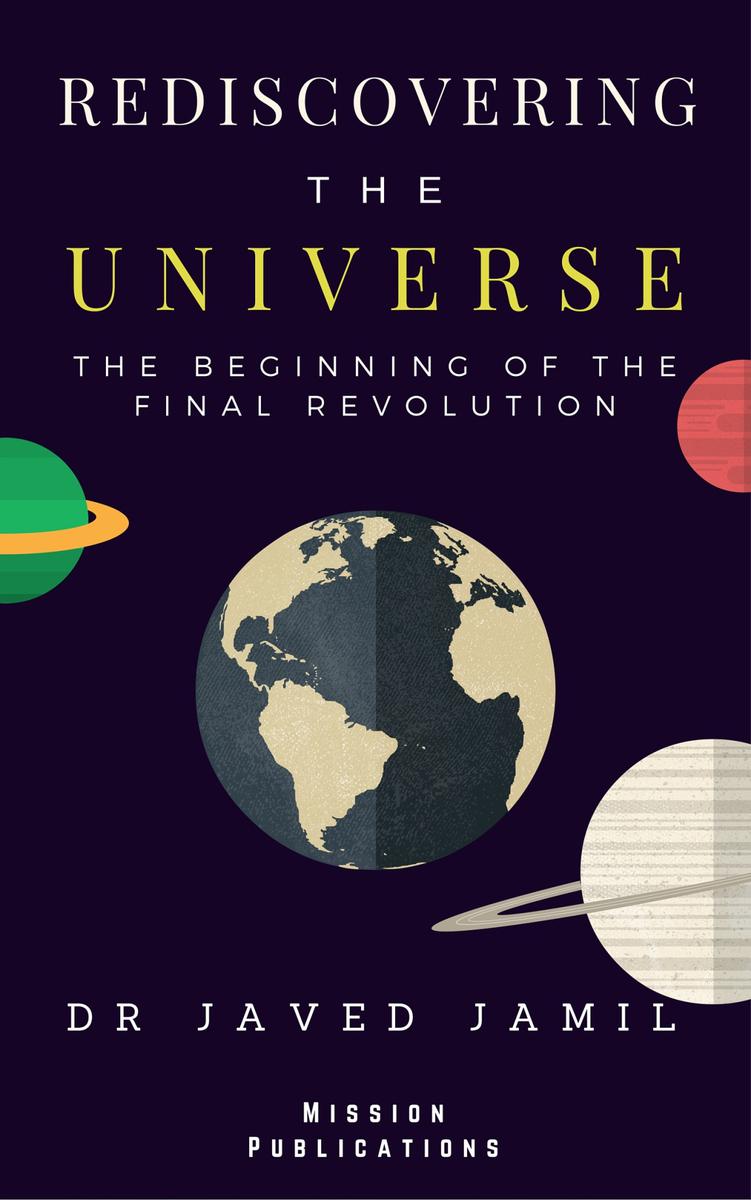
Rediscovering theUniverse:
The Beginning of theFinal Revolution
Rediscoveringthe Universe:
The Beginningof the Final Revolution
By
Dr.Javed Jamil
MISSIONPUBLICATIONS
MISSION PUBLICATIONS
ALL RIGHTS RESERVED
No part of this publication maybe reproduced or translated or transmuted in any form or by anymeans, electronic or mechanical, including photocopy, recording orany information storage or retrieval system, without permission inwriting from the publishers.
Rediscovering the Universe:
The Beginning of the FinalRevolution: Part I
Author Dr. Javed Jamil
Edition First
Year of Publication 2004
Publishers
Mission publications,
284, A Pocket, Sarita Vihar
New Delhi-110076, India
Phones: 91-11-29949212,91-8130340339
E mail javedjamil786@gmail.com;doctorforu123@yahoo.com
To
Albert Einstein
&
David Bohm
Table of Contents
Prologue
This is sheer coincidence,pleasant though, that Rediscovering the Universe: The Beginning ofthe Final Revolution is being published in the hundredth yearafter the presentation by Einstein of his Special theory ofRelativity. It would be in the fitness of things that, in thecentenary year, Einsteins theories and subsequent developments inthe fields of physics and cosmology are scrutinised without beingunduly overawed by the giant stature of arguably the greatestgenius of the twentieth century.
The Universal Theory ofRelativity presented in this book will be a reminder to the worldthat there is still a vast scope for novel philosophical ideas inthe field of the knowledge of the Universe: Ideas that canremarkably transform our view of the Universe. I do not claim thetheory itself is the Final Revolution, but I am supremely confidentthis will herald what, I hope, will be the final phase of theunderstanding of the universe. This will ultimately lead to agenuinely decent understanding of the universe--the way it cameinto existence; the way it functions; and the way it would continueits future journey to its ultimate destination. I do hope the bookproves not to be a shot in the dark but a shot in the arm for thedevelopment of our knowledge of the world we live in.
Though the book criticallyanalyses Einsteins philosophical ideas in the development of themodern theory of Physics, this has not stopped me from dedicatingthe book to the great genius. This is my tribute to his immensecontribution to knowledge. Theories come and go but the work ofthose who labour, day and night, to bring forward these theories intheir quest for knowledge must always be admired. Einstein wasinstrumental in giving a philosophical twist to an otherwise drysubject like Physics. The need of the time is to keep thinking,presenting new ideas and trying to come to the best possibleconclusions. I am also dedicating the book to another great name inthe modern Physics, David Bohm, for whom I have developed a veryspecial respect for reasons that will be obvious to readers onlywhen they have finished this book. The readers must not howeverpresume that the book supports the idea of the phantasmic world,mooted by Bohm.
Readers may notice somereluctance in the initial part of the development of the newtheory, named as Universal Theory of Relativity and a steadilygrowing confidence in the treatment, as the book progresses. Thisreflects the reluctance I had when I began to formulate my ideas inthe form of a theory and subsequent elevation of the level of myconfidence, which reached sky high by the time the work finished.One thing is sure though. The universe the way the readers view itbefore they start reading the book will appear to have undergone amassive transformation by the time they reach its concluding part.From a universe that looks at best a functionless receptacle ofnumerous functioning constituents, which have hardly any means offast enough communication between them, it will have become a muchmore organised, well-connected, state-like system. The universe, asa result, will certainly emerge as much lovelier and livelier thanwhat the modern physicists have shown us so far.
I had published the preliminaryideas of the Universal Theory of Relativity about six years ago ina booklet, entitled, Beyond Einsteinian Limits. But that was onlyan initial attempt to put some ideas on record. These ideas had notbeen corroborated in the way they deserved. The present work willsurely go a long way in that direction.
I would like to acknowledge thecontribution of my friend, Mr. Jalal Umar and my US friend, Ms.Stephanie Crane whose suggestions have been crucial, almostinvaluable for this presentation. I find myself at loss of words tothank my wife, Dr. Iffat Masood Javed, my children, Abuzar and Ali,my parents, other family members, relatives and friends forproviding me the moral support needed for such an onerous task.Finally, I would also like to express my gratitude to myyet-to-be-born child coinciding with whose progress towards thebirth this work too began, advanced and completed its journey. Bythe time, s/he arrives, God willing, hopefully, this book will alsohave arrived on the scene.
Dr. Javed Jamil
September 22, 2004
The man behind the book
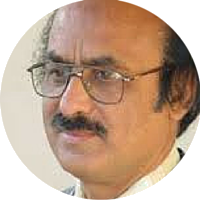
Dr. Javed Jamil is amedical doctor by profession. Such has been his grasp on issuesrelated to diverse spheres of life however it is no wonder peopleoften mistakenly consider him to be a Doctor of Philosophy (Ph.D).He is quickly emerging on the international scene as a thinkerwhose amazing versatility would sooner than later compel the worldto appreciate his work and admire the comprehensiveness of hisapproach in dealing with contemporary issues. He has alreadypropounded several remarkable theses in various fields.
Dr. Jamil began by studyingmedical issues of great social importance like Family welfare andAIDS. He then authored a highly absorbing critique of the currenteconomic ideology being pursued all over the world in a bookentitled, The Devil of Economic Fundamentalism. Hefollowed it with another remarkable work, The Killer Sex.He also authored several books on religious subjects especially onIslam. He has also created a collection of poetry and a novel (bothin Urdu) to his credit.
Dr. Jamil has an aggressivestyle of writing; he marvels in presenting novel, oftenrevolutionary ideas, and does not shy away from challenging theestablished or dominant trends howsoever popular they are. Some ofhis remarkable ideas are summed up here.
First, he has waged aruthless war of attrition against what he calls economicfundamentalism, which he defines as the ideology that givespredominance to economics over all other spheres of life, withoutcaring for its devastating effects on health, family peace andsocial order. He says:
Thus, the rise and growth ofeconomic fundamentalism have been, from historical standards,rather rapid taking hardly a few centuries. The think-tank of theworld of economic fundamentalism has taken innumerable steps tostrengthen their hold. They have sacrificed the goddess of justicebefore the eyes of the Statue of Liberty. They have transformedthrough political manoeuvres the state into their estate. They haveincessantly and relentlessly been trying to organise a grandfarewell for religion. They have captivated the peoplesimagination through the media. They have got the attire of societyredesigned so that it looks gorgeous and inviting to their eyes.They have industrialised sex, in which they have discovered the henthat always lays golden eggs. They have relocated the entireeducational set-up on the Wall Street. They have monopolised thetree of economy whose fruits and shadows are only theirs; otherscan only admire its beauty from a safe distance. They have takenscience and technology as their mistresses who are always keen tooffer their glorious best to them. They have nipped all thechallenges in the buds by masterminding popular movements. Theyhave lynched the civilisation, which has been given a newincarnation; and now Bohemians are called civilised. Last but notthe least, they have been busy colonising the good earth in thename of globalisation.
Next page
